This Bird Can Fly for Months Without Landing
Swifts practically live in the sky. These birds skip land for nearly a year, doing everything midair, from eating to sleeping. They travel thousands of miles without ever stopping to perch. Scientists once had theories, but now they have the data, and it turns out, the truth is even more extreme than anyone guessed.
They Sleep While Flying
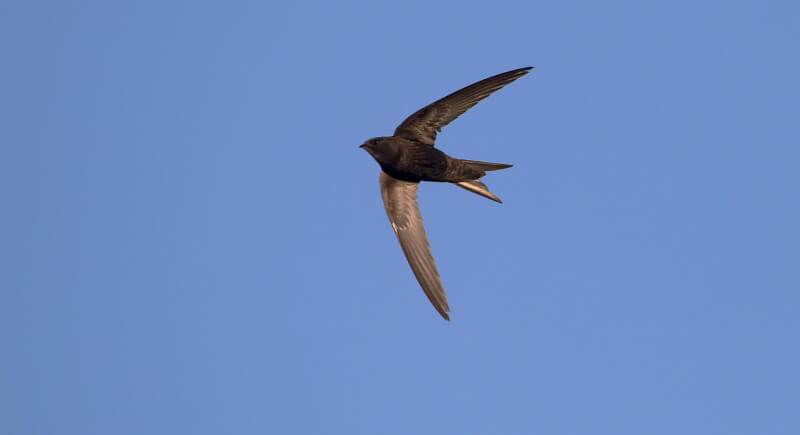
Credit: Getty Images
There’s no mattress up there, but Swifts still manage to sleep on the move. Research suggests they rest their brains in short bursts, likely using just one hemisphere at a time. It’s similar to how dolphins nap while swimming. This trick helps them stay airborne without crashing into trees or each other.
They Avoid Landing for a Full 10 Months
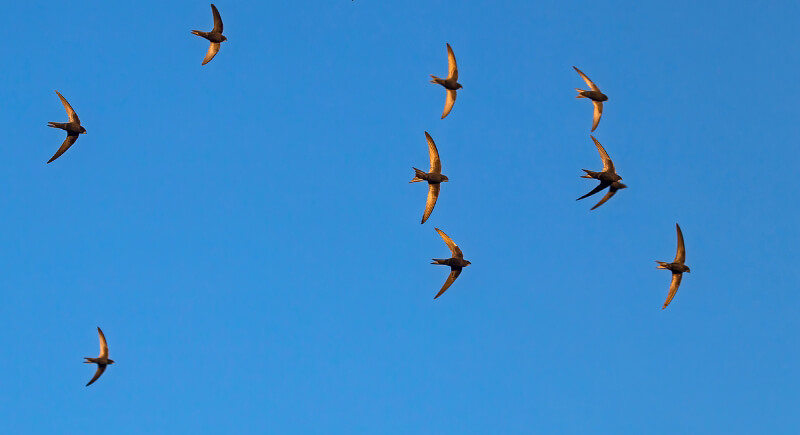
Credit: Getty Images
After their breeding season wraps up in Europe, common swifts take off for Africa and don’t touch land again for about 10 months. Data loggers strapped to their backs revealed this nonstop flight cycle. They stay airborne during the entire migration and wintering period.
They Eat Midair Buffet-Style
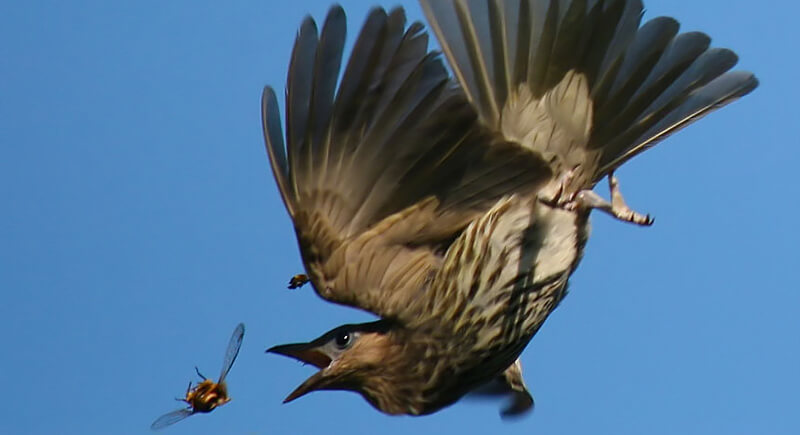
Credit: Wikimedia Commons
Swifts grab flying insects straight from the sky, scooping them up with wide, open mouths as they dart through swarms. Their diet includes flies, ants, aphids, and even spiders that get swept into the air by the wind. This airborne snacking style enables them to continue without needing to stop and hunt.
Their Wings Work Like Built-In Gliders
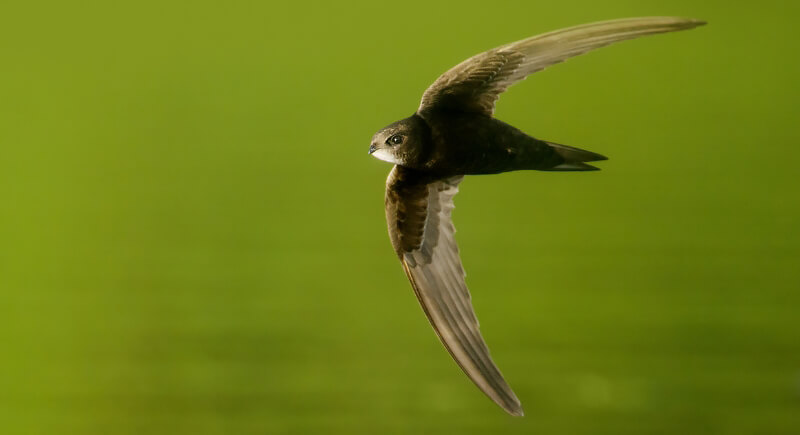
Credit: Getty Images
Shaped like curved scythes, swift wings are long and narrow, which allows them to coast for long distances with minimal flapping. Unlike birds that rely on soaring or gliding through thermals, swifts power through the air with steady wingbeats and precise maneuvers, adjusting in real-time as wind conditions shift.
They Even Pick Up Nest Material While Flying
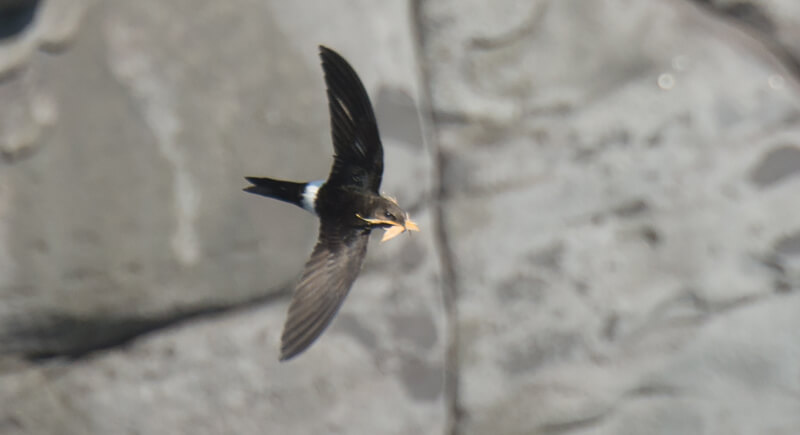
Credit: Wikimedia Commons
During breeding season, swifts gather nesting supplies without stopping. They scoop up bits of feathers, grass, or airborne fluff, then carry them back to their nesting spots, which are often located in buildings or crevices. This kind of multitasking helps them avoid wasting time on the ground, where they’d be vulnerable.
Their Legs Are Basically Useless for Walking
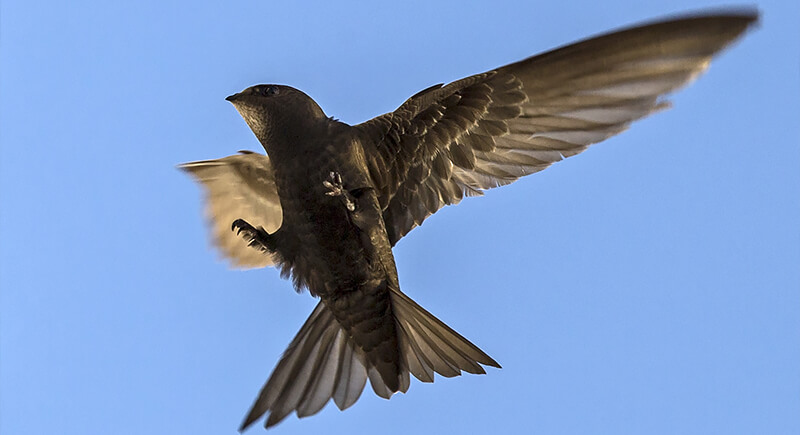
Credit: Wikimedia Commons
A swift’s legs are so short that walking isn’t an option. They can cling to vertical surfaces or perch briefly, but taking off from flat ground is almost impossible. Landing on open terrain puts them at risk, so staying in the air has become safer for survival.
They Molt Flight Feathers While Airborne
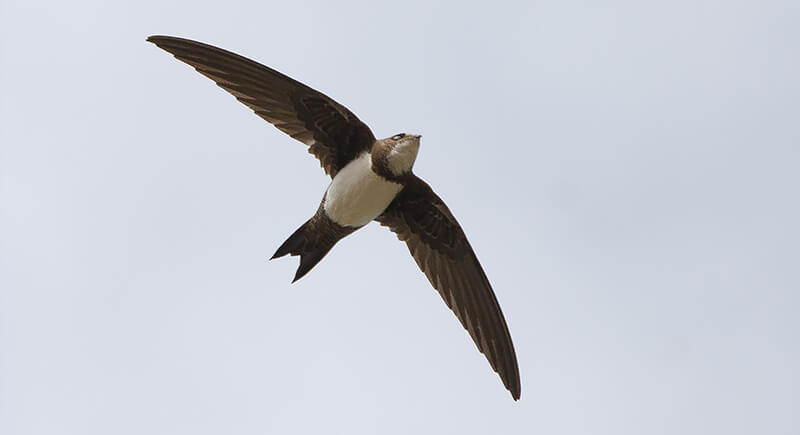
Credit: Wikimedia Commons
Shedding and regrowing feathers is tricky when flying nonstop, but swifts do it midair. Birds that stayed aloft the full 10 months had already replaced their flight feathers, while those that landed more often hadn’t completed their molt.
They Can Live Up to 20 Years
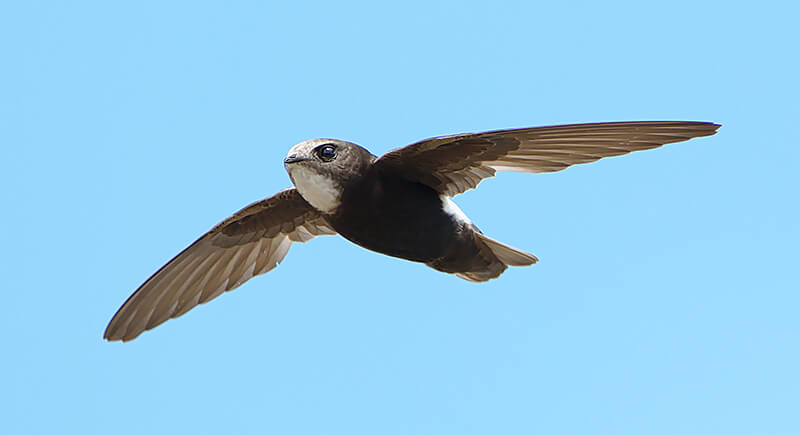
Credit: Wikimedia Commons
Spending most of their lives in the air doesn’t seem to wear them down. Swifts can live as long as two decades, which is impressive considering the mileage they rack up annually. By avoiding predators on the ground and maintaining a high-flying lifestyle, they reduce certain risks that can shorten their lifespans.
They Fly at High Speeds for Long Periods

Credit: Wikimedia Commons
Common swifts can reach speeds up to 69 mph (111 km/h). This is part of their daily commute. Their velocity helps them cover ground quickly and stay ahead of changing weather.
Their Migration Stretches Across Continents
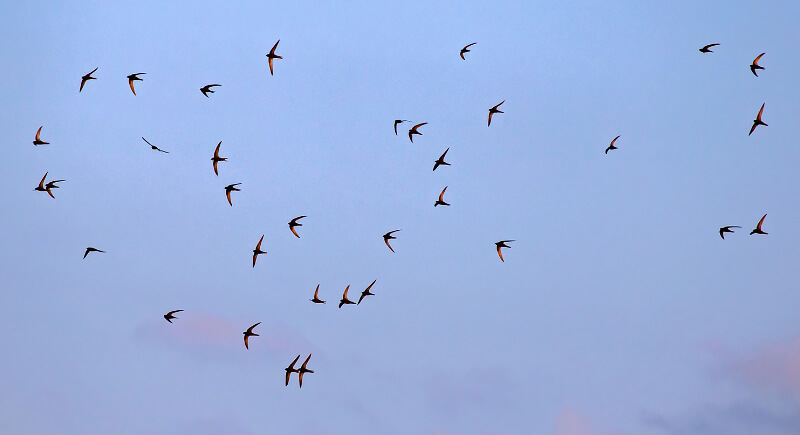
Credit: Getty Images
Swifts fly thousands of miles between Europe and sub-Saharan Africa each year. This Afro-Palearctic flyway takes them through diverse climates and landscapes, though they rarely stop to admire the view. And they do it all without needing GPS; it’s thought that the Earth’s magnetic field is their guide.